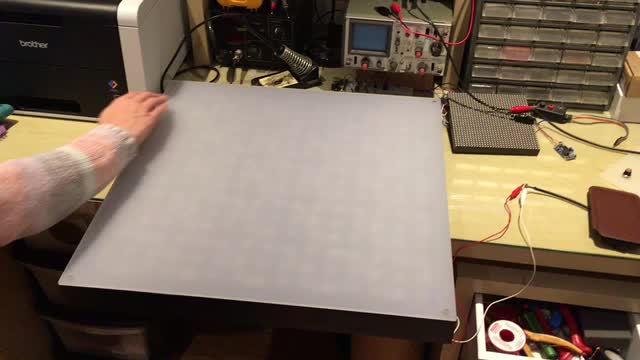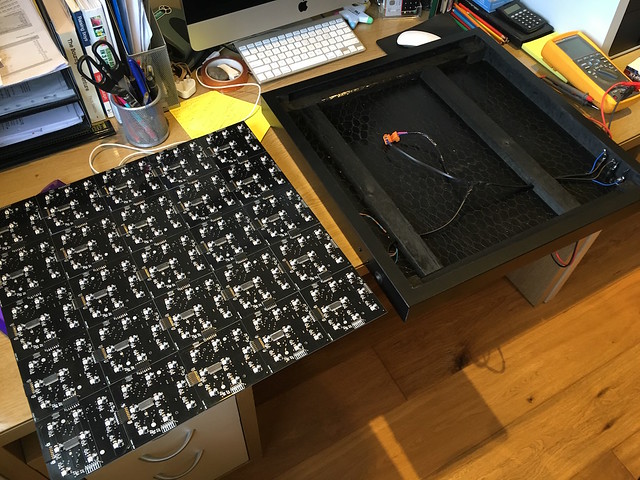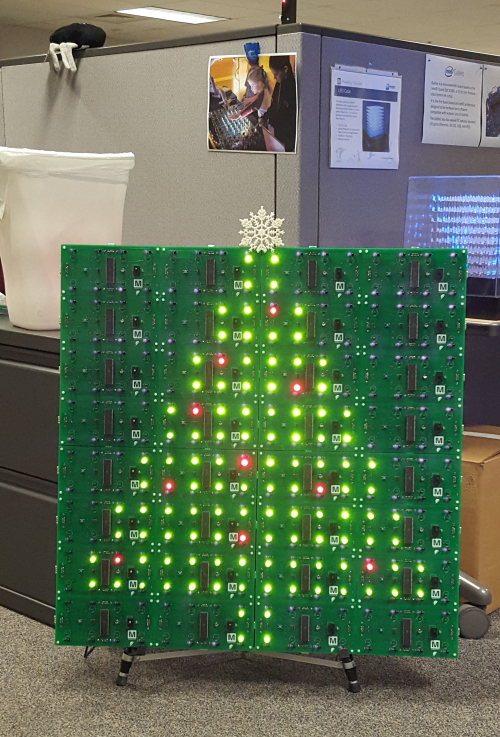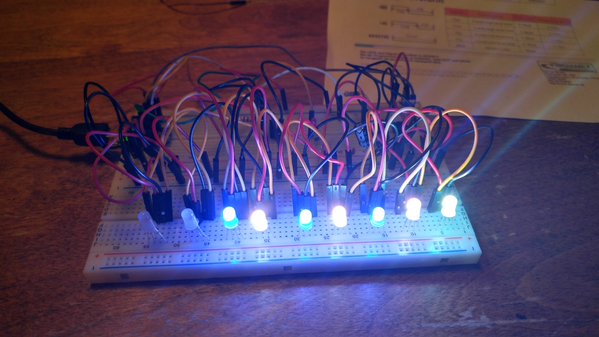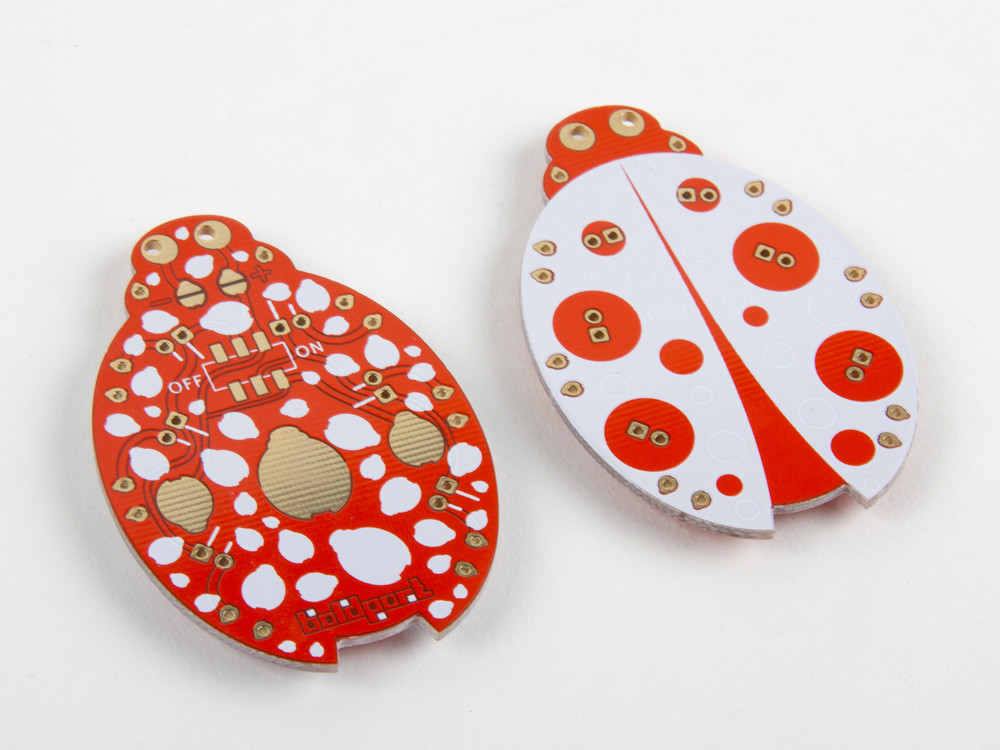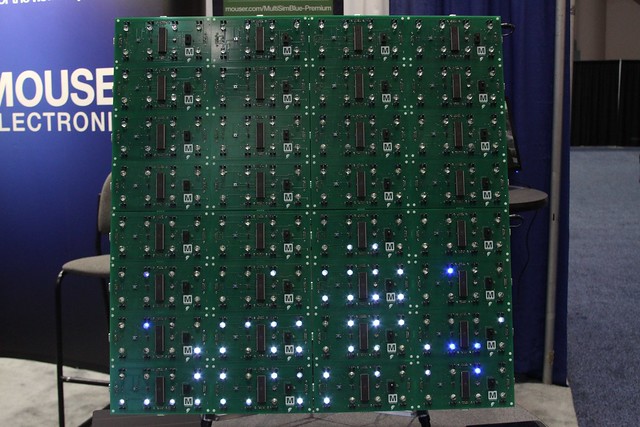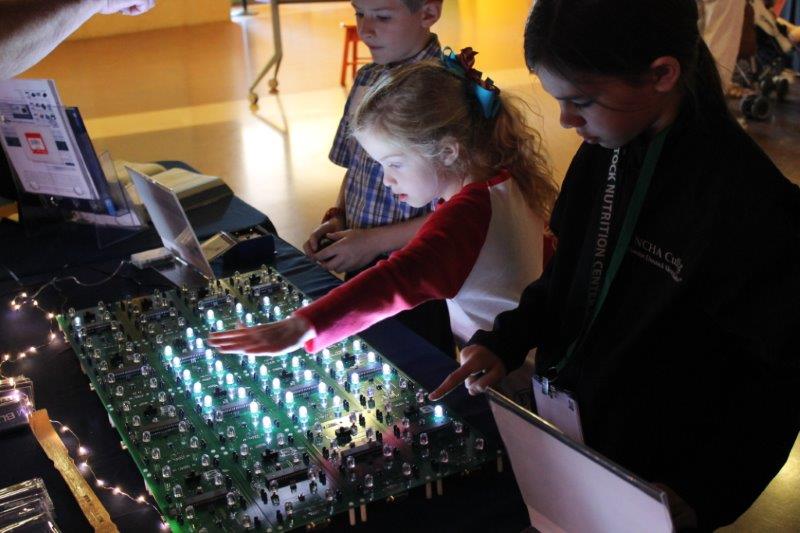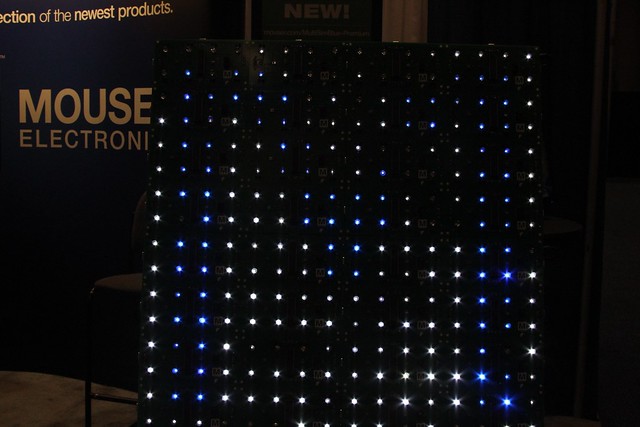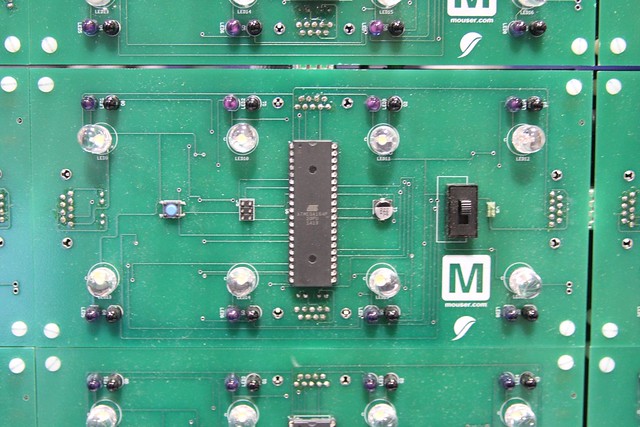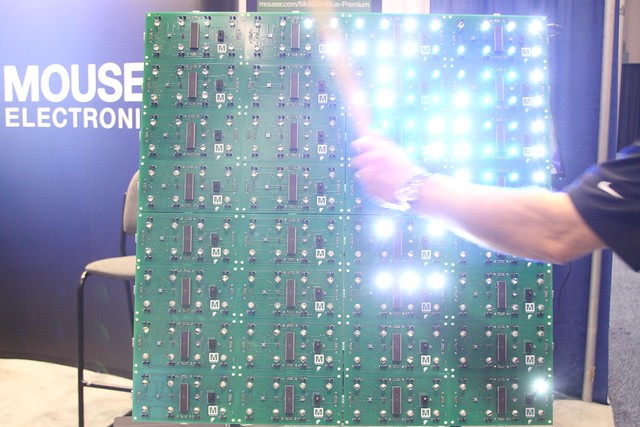Craig shared this project which evolved with the assistance of the Octolively project.
Thanks for the previous help you gave me when I was designing my own IR proximity boards. I thought you may want to have a look at the finished item.
I have attached a picture of the 25 100mmx100mm boards and a video of the table working. Each one had a SOIC PIC 18F26K22 on it, with 9 IR transmitters and receivers and 9 x WS2812b addressable LEDs on. They all kind of communicate with each other so that each board does the same IR reading of the same ‘pixel’ at the same time as the others. I simply have a pin on the board which outputs low whan it is working (taking a reading’, then after it is done, it changes to an input pin, it continually looks at this pin until it goes high, meaning all the other boards have also completed that particular reading and then it’s on to the next one.
I also have a calibration function so any thickness opaque covering can be put on the table top.
I have 2 buttons on it. One to change the colour (including the rainbow fade) and also a button to change the fade speed.
Thank you, Craig, for sharing your project! We’re glad you were able to get inspiration and helpful information from one of our projects.




